The Best Air Purifiers, According to Designers and Environmental Experts

Our editors independently select the products we recommend. We may earn a commission on items bought through our links.
From the novel coronavirus to Canadian smoke, dangerous stuff is floating around in the air we breathe. It’s hardly surprising that the pandemic inaugurated an upswing in demand for air purifiers, particularly residential models, that can also ameliorate lesser issues like airborne allergens, cooking smells, and the like.
Today's Top Deals
The growth of the market has led to air purifiers that are smarter and designed better for home environments. Where they might once have been thought of as necessary eyesores for germophobes or the medically compromised, there are now options that appeal to smart home nerds and even the design-minded who can’t stand to glance at an Instant Pot.
There are still some headaches with air purifiers — dirty filters and noise among them — but they are a fairly inexpensive way to make one’s home a healthier place to spend time. Models range from the mid-$200s for simple but effective units to more than $500 for high-tech models with all the bells and whistles. Regardless of features or budget, the principal concern for everyone buying an air purifier should be how well it purifies the air, followed closely by questions of maintenance, noise, and operation.
Note, air filtration and purification are technically different, but for the purposes of shopping for a buying a device they’re used interchangeably by manufacturers and in this guide.
What the Experts Say
To identify the few objective factors to consider when purchasing an air purifier, SPY spoke with Odile Liu, chief product officer at Blueair; Chris Li,. co-founder of Sterra; Tony Abate, Vice President and Chief Technology Officer at AtmosAir Solutions; and Michael Schrantz, founder and operator of Environmental Analytics to help sort through the best air purifiers available now.
Liu says consumers should look for air purifiers that are independently tested for performance and ozone safety. Energy Star certification is a given for any appliance while a California Air Resources Board certification ensures that an air cleaner is both electrically safe and meets an ozone emission concentration limit of 0.050 parts per million.
The Association of Home Appliance Manufacturers’ “Verified” mark tells you that the advertised Clean Air Delivery Rate (CADR) has been independently tested. Abate calls CADR a measure of “the ability for an air purifier to deliver clean air into a space” and says most superior options will test to a CADR rate of 300 or more. Larger rooms necessitate higher CADR scores. Lim says they boil down to “the volume of air in CFM (cubic feet per minute) that is cleaned of particles, and shows how efficient air purifiers are at capturing [specific] indoor pollutants. Therefore, you should check the CADR of air purifier models and their recommended room size coverage area to make the best decision based on your needs.”
Schrantz adds that any filter properly labeled as HEPA has been independently tested, as “true HEPA filtration with a rating of H13 (European Norm 1822 classification) or better can remove 99.97% of all particles in the air measuring 0.3 microns in diameter,” meaning they can filter out mold pollen, mold spores, bacteria, and some viruses as well.
While everyone wants to breathe clean air, the road to get there looks different based on the activities and location of one’s household. And different air purifier designs are better suited for certain needs — including mold, air pollution, and even smoke from candles or cooking.
“Most air purifiers have a two-stage system that includes a pre-filter and a HEPA filter, others have three-stage systems where the third layer is activated carbon filter. Some advanced models have a three-stage system with added filtration technologies such as UV-C light technology,” Lim says. Along with this team of experts, SPY editors have gathered the best air filter picks in the list below.
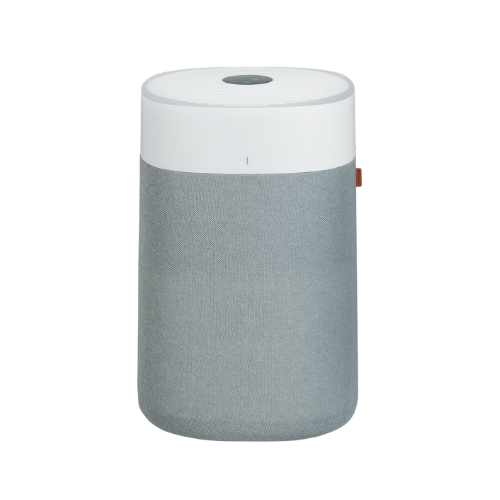
BEST OVERALL
Blueair Bure Pure 211i Max
Buy Now
It’s hard to find an area in which the Blue Pure Max 211i Max doesn’t excel. It’s equipped with myriad long-lasting filters that meet strict standards, operates quietly, and has smart features that are well thought-out.
Liu unsurprisingly sings the praises of her company’s product, spotlighting everything from its “4.8 clean air exchanges every hour” to its “Scandinavian design to seamlessly integrate into any space.” It’s also a great air quality monitor, with a five-color light display on the unit itself for quick checks and in-depth data and graphs available in the Blueair app. She’s hardly impartial, but it’s still hard to argue with the quality of this device.
At $350, the Blue Pure 211i Max is slightly pricier, but those with smaller budgets can find similar features in less powerful Blueair machines (for smaller spaces) and in wifi-free versions for those who don’t need all the bells and whistles.

FOR BEST PURIFICATION
Air Oasis iAdaptAir
Buy Now
The frills on this purifier are minimal, but its unique array of filters and cleaning technologies mean it’s a great choice for those whose health conditions demand truly clean air.
There’s a HEPA H13 filter built in, the same kind of filter Lim says is often used in hospitals; a carbon filter that takes care of VOCs, an unexpected silver ion filter that the company claims can destroy mold, bacteria, and viruses; a germicidal UV light; and bi-polar ionization that releases ions that bind with contaminants, causing them to sink out of the air. Schrantz, whose contact information was provided by the team at Air Oasis, says that he’s been impressed with “their transparency when it comes to their research and development of their units,” specifically citing the rigor of the third-party testing the company pays for.
The iAdaptAir is pricier than many of its competitors—this model is about $100 more than a Blueair that covers a similar area—because of how many kinds of filtration and purification it includes.
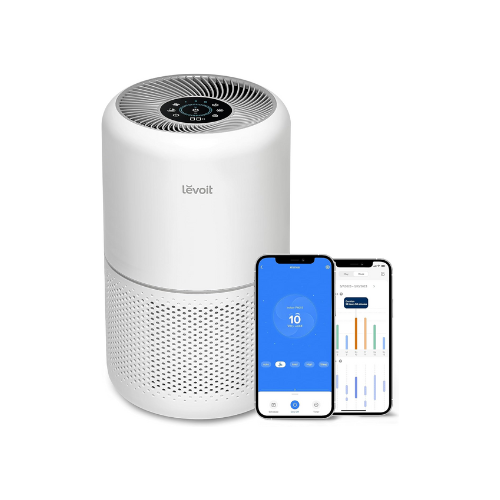
BEST QUIET
Levoit Core 300S
Buy Now On Amazon
Most modern air purifiers are plain slabs of neutral-colored plastic, designed to be as visually innocuous as possible. The other half of the blending into the background equation is quiet operation, and that’s where this purifier shines.
Levoit says this purifier operates at a volume as low as 22 decibels (dB). (For reference, a whisper is roughly 30 dB). It’s got a pretty standard feature set, an activated carbon filter, automatic operation, WiFi capability, and 240 cubic-meters-per-hour CADR. If the goal is to set it and forget it, this purifier is up to the task.
The Levoit is just $150, meaningfully less expensive than the truly fancy purifiers on the market.
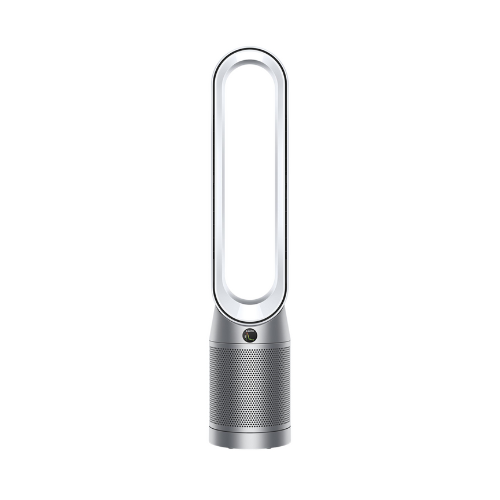
STATEMENT PURIFIER
Dyson Purifier Cool
Buy Now
With so many beige boxes designed to blend in, it’s not all that difficult for the typically aggressive styling of a Dyson device to stand out.
Josh Mitchell, an HVAC technician and the owner of Air Conditioner Lab, says the Dyson is “worth considering, offering advanced features like air quality sensors and smart connectivity.” And even though the main draw is style, the substance is nothing to scoff at for those in search of a legitimate HEPA-13 filter, built-in fan, and built-in LCD screen that displays a live graph of the air quality in the room.
It’s a Dyson, which means it’s expensive ($629), though less expensive than other Dyson models that combine purification with heating or humidification instead of a simple oscillating fan.
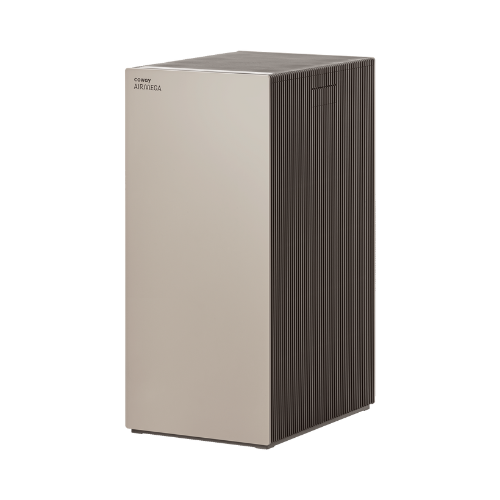
FOR LARGE SPACES
Coway Airmega ProX
Buy Now
Those who need to purify the air in a large space like an open office, workshop, or multi-car garage could place multiple air purifiers around the space. Or they could just invest in an Airmega ProX.
A regulation basketball court is about 4,700 square feet, or just a bit larger than the 4,253 square feet of coverage promised by this beast of an air purifier. Of course, it’s a great fit for smaller large spaces too, and even advisable since, as Liu puts it, “While opting for a purifier larger than necessary can enhance efficiency, it’s crucial to avoid under-sizing.” This particular model has HEPA H13 and activated carbon filters that filter the air from intakes on both sides. Advanced particle sensors display what if any particles are present, and the filter is rated to last a full year.
The ProX has an MSRP of $799, a price justified by how much, how fast, and how well it can clean the air in a large indoor space.
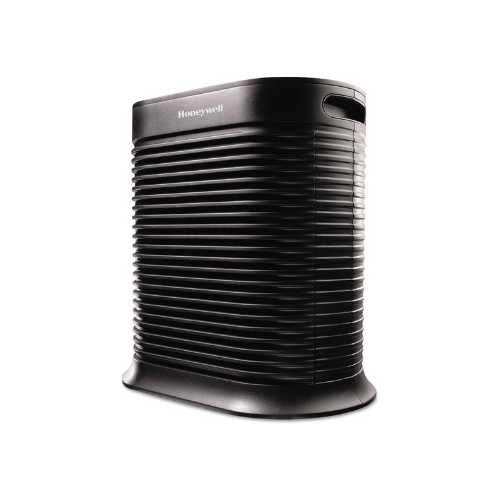
NO-FRILLS PURIFIER
Honeywell HPA300
Buy Now On Amazon
Simplicity is the lodestar of the HPA300, a relatively low-tech option worth considering for those who don’t need any more complications.
Mitchell says “Honeywell is well-regarded for its HPA300 model, known for its effectiveness and coverage area.” He didn’t mention any high-tech features because, well, there aren’t any, unless you count “turbo mode.” It has a pretty standard filter setup: a pre-filter that captures large particles and odors and a true HEPA filter that captures up to 99.97 percent of allergens 0.3 microns and larger. The end result is independently tested CAGR scores of 300 for tobacco smoke, 320 for dust, and 300 for pollen, all in line with stats for effective purifiers.
Much like the purifier itself, the $270 price tag for this effective, dependable device is solid.
Frequently Asked Questions About Air Purifiers
What’s the Difference Between Filtration Purification?
“Air Filtration Devices (AFDs) are units that utilize air filtration media (e.g., HEPA air filter and/or carbon filter) to physically remove contaminants from the air,” Schrantz says. “Air purification devices, on the other hand, focus on using purification technologies (e.g., UV
light, ionization, photocatalytic oxidation (PCO) to break down or otherwise “destroy” the exposure concern related to the contaminant.
Who Needs an Air Purifier?
Cleaner air can benefit everyone, but Schrantz says that pet owners, residents of areas prone to wildfires, and gas stove users are among those who will find air purifiers especially useful. “Areas prone to wildfires or larger sources of pollutants may benefit from multiple strategies (e.g., filtration, dilution, isolation), including increasing the amount of air filtration/purification in a given environment,” Schrantz says. And since COVID isn’t going away any time soon, an air purifier that can help prevent the spread of the coronavirus is something with long-term utility.
Is an Air Purifier Enough?
We always focus on removing the “source” of contamination wherever possible,” Schrantz says. “If you are dealing with wildfire smoke, however, ‘removing the source’ may not be possible and in those cases, appropriate deployment of purification systems can significantly reduce exposure.”
Proceed to Checkout
More Top Deals from SPY
Best of SPY
SPY connects you with the latest top-rated products in tech, style, grooming, fitness and home essentials. Our expert team of editors and product reviewers have researched and vetted over 100,000+ products to bring you only those worth your money. Our job is to do the research for you so you can spend time enjoying your purchase rather than shopping for it. Most importantly: We never recommend a product or service we wouldn’t buy ourselves.
1. Coway Airmega AP-1512HHS
The design is stylish, and the air purifier is easy to move when I need to dust or vacuum around it. More importantly, it has a pre-filter, carbon filter and True HEPA filter, and together, they work to clean the air quietly and effectively.
The smart air purifier also connects via app and even has voice control. However, I love being able to just look at the top right side to easily determine the indoor air quality. If it’s blue, the air quality is good; a pinkish color indicates that the air is moderately good; red means the air quality is unhealthy. There’s also a light that glows when each filter needs to be cleaned/changed. The Coway Airmega AP-1512HHS has a timer I can set for it to run 1, 2, 4 or 8 hours, and it has an auto setting and eco mode to save energy. Of course, I can also do and see everything on the app as well. The price tag isn't cheap, but I believe this is the best air purifier for most people.
Pros: Multiple-filter system, app/voice control, easy to transport
Cons: Aesthetic design may not be for everyone.
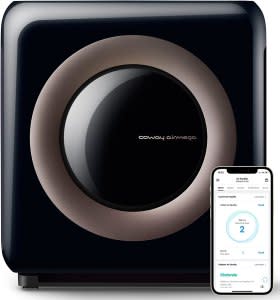
Coway Airmega AP-1512HHS
2. TruSens Air Purifier
The TruSens is another purifier that I’ve had since May 2020, and I recommend it for several reasons. The five fan speeds (including whisper and turbo) provide more choices, and the touch controls are really simple to use. The air purifier also includes a Sensor Pod that is placed on the other side of the room and detects changes in the air even several feet away (and adjusts the fan’s speed accordingly). There’s a washable pre-filter, carbon filter and True HEPA filter. The air purifier has a UV purification setting, but I don’t use it. Although the TruSens is designed for rooms up to 1,425 sq ft, I’ve found that it works best in smaller rooms (up to 1,000 ft).
In addition to red, yellow and blue lights to let me know the air quality reading, there are also actual numbers based on the air purifier’s algorithm. For example, yellow indicates moderate air quality, but the range is between 50-100, so a numerical reading of 90 lets me know the room is close to entering a poor-quality range. Other indicator lights are for replacing the filters and UV bulb. The lights on the control panel can also be turned off when I’m sleeping. The timer can be set to turn the purifier off after 2, 4, 8 or 12 hours. TruSens isn’t as well known as some of my other picks for the best air purifiers such as Dyson or Coway, but it’s a dependable model and a great choice for medium-sized rooms and homes.
Pros: Sleek design. Handle makes it easy to carry. Multiple-filter system
Cons: Must turn the air purifier on the side to change filters
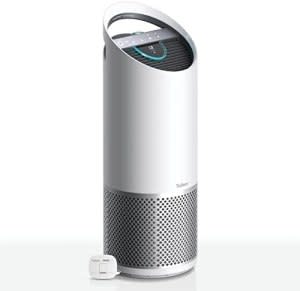
TruSens Air Purifier
3. Alen 75i Air Purifier
The air purifier is recommended for areas up to 1,300 square feet, and my bedroom isn’t even close to being that large. However, when I’m asleep, it’s the perfect height for me to just roll over and adjust with just one eye open. Even though there are five speeds, I typically run it on speed 2 — and if my neighbors are outside smoking while I’m trying to sleep, I’ll bump it up to 3 — which is still quiet enough not to disrupt my sleep cycles. Honestly, I never need to go to speeds 4 and 5.
There’s a color-coded system to let me know how clean (or dirty) the air is, and I can choose the type of H13 True HEPA filter to use. I use the B7-Fresh with activated carbon for allergens and smoke, but there are also two other filter choices for this model — and all of the features come with their own pre-filter that can be vacuumed for added cleanliness. Another feature I love is the ability to choose the panel color. I chose a red cover, but then purchased a gray (stainless steel) cover so I can swap them out occasionally (can you tell that I really like my air purifiers?). Other panel colors choices include white, espresso, weathered gray, oak and graphite. Be warned: this air purifier is heavy, but there’s a handle that makes it easy to move when I need to vacuum or clean my bedroom.
Pros: Easy to operate. Multi-filter system. Choice of colors. Choice of filter types Transport handle.
Cons: Expensive. Quite heavy.
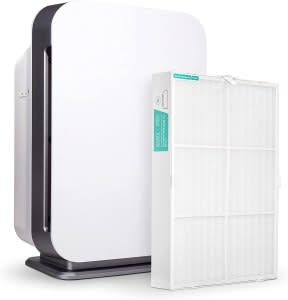
Alen 75i Air Purifier
4. Coway Airmega 400S
Although there are older models, this model has already more than earned its spot among the very best air purifiers. Even in a short period of time, it’s proven to be easy to use and effective in cleaning the air in large rooms. The smart purifier uses a multi-filter system that includes a True HEPA filter, active carbon and a washable pre-filter.
The rings on the front turn different colors to let me easily view air quality in real-time, and the indicators on the top alert me when it’s time to wash or replace filters. The air purifier has five fan speeds, including a smart and a sleep mode. I can set the timer for 1, 2, 4 or 8 hours. In addition to the manual controls, the Coway IoCare Mobile app lets me control and monitor air quality remotely, and I can also use Alexa for voice control.
Pros: Handles on the side, can slide on floor, so you don't need to lift it to move it.
Cons: Bulky

Coway Airmega 400S
5. Blueair Blue Pure 211+
I’ve had the Blue Air 411+ since June 2020, and it produces the best smelling air of all of the purifiers I’ve tested. To clarify, they all remove bad and stale odors and create a fresh clean smell. However, the BlueAir Blue Pure 211+ produces a particularly nice smelling home — although it’s not perfumed in any way. The air purifier uses a HEPA Silent filtration system that includes a carbon filter, particle filter, and washable fabric pre-filter.
Like the best air purifiers I’ve reviewed, the Blue Pure 211+ is also easy to operate. There’s just one button, and I press it to turn the device on and also to change fan speeds.
Pros: Very easy to operate. Color assortment for pre-filters
Cons: Heavy and hard to transport with no handles

